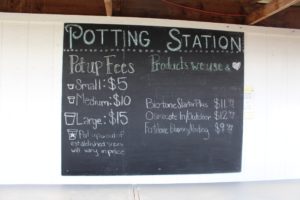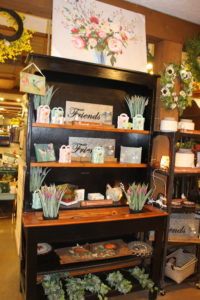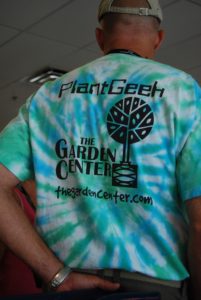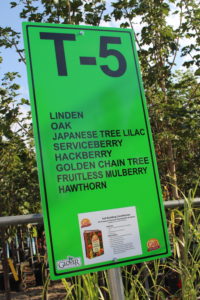Creating Relationships And Revenue
In a world already inundated with overcrowded inboxes; overstuffed mailboxes; and newspapers overflowing with inserts, coupons and brochures, the decision to implement a promotional campaign might seem like a waste of finances, time and energy. On the contrary, preferred customer programs membership clubs, newsletters, E-mail updates, special event access, extended savings, coupons and previews might be the unexplored resource that can secure customer loyalty, attract new customers and maximize annual revenue for the independent garden center.
The first question that independent retailers need to consider is how these preferred customer programs positively impact their businesses. The obvious answer is the correct one: These programs generate more traffic and revenue. In order to generate more traffic, independent retailers must find a means of increasing the frequency of customer visits. Preferred customer programs build customer intimacy and generate that additional visit. But how can preferred customer programs encourage visitation frequency, and how much of an influence can adding just one extra visit per customer have on an independent garden center’s success?
First An Example
Waterloo Gardens, Inc., asserts Kellee Magee, director of member resources with the American Nursery & Landscape Association, is “one of the best in the business in these areas.”
Tim Schauer, director of marketing for Waterloo Gardens, Devon and Exton, Pa., explains that Waterloo offers a Preferred Customer Club. By joining the club, participants receive monthly newsletters, special coupons, admission to unique after-hours events, additional weekly discounted items and an annual 1-percent reward certificate mailed directly to their homes. Membership to the club is free, a common trait among preferred customer programs.
The idea behind clubs like this is to form a win-win relationship with customers such that the benefits of being a club member justify giving up personal information. The retailer is able to form a closer relationship with customers, while customers get discounts and information. And while garden centers increase visitation, club members get special events just for them.
But the success of a preferred customer program, as Schauer reiterates, is only partially determined by how you reward the customer. A second key strategy behind the effectiveness of these programs is how the retailer uses the data obtained through the program. The market information acquired through a more personal relationship, according to Schauer, allows Waterloo Gardens to know who its customers are and what they purchase. Waterloo can then target offers based on shopping behaviors and geography.
As preferred customer programs perpetuate a strong and trustworthy relationship between customer and retailer, the information collected from these programs allows marketing specialists to target purchasing tendencies and interests that sharpen the timeliness and effectiveness of sales and events. Because of this, Schauer says the Preferred Customer Club has had a “huge positive effect on business.” How huge? Schauer reports that “110,000 customers are enrolled in the program, and 82 percent of all sales are made to these Preferred Customer Club customers.”
Competing With The Boxes
Preferred customer programs undoubtedly benefit the success of independent garden centers, but what impact might these programs have on independent garden centers in relation to their big box competitors?
The slightest increase in annual customer visits, which retailers generate through strong and well-researched promotional efforts and communications, assists the independent retailer’s ability to compete with home centers such as Lowe’s and Home Depot.
A study conducted by nQuery and sponsored by Novalis Inc., “Achieving Customer Intimacy: A Roadmap to Greater Profitability for the Independent Retailer,” found that customer intimacy may be the one strategy yet unemployed to differentiate an independent garden center from big box competitors. The research study considered the impact of customer intimacy for the independent garden center and established that garden centers with high brand awareness should dedicate a disproportionate share of their marketing resources to building a tighter customer-retailer relationship.
An evaluation of data collected by the National Gardening Survey and nQuery demonstrates the influence a single additional annual visit can have on the independent garden center. From 1993 to 2003, the percentage of gardening households that bought products from home centers rose from 20 to 65 percent. The percentage of gardening households that bought products from independent garden centers also increased from 43 to 54 percent. These results show that over the last 10 years the growth of household penetration belongs to the home center, but only with an 11-percent difference, the independent garden center nevertheless maintains a competitive percentage.
The reason for the home center’s dominance in growth of household penetration is a direct result of its tendency to inspire more frequent visits from customers, but the inspiration to visit stems from the home center’s emphasis on product selection. While independent retailers are addressing the visitation disparity by placing renewed emphasis on their hard line offerings, preferred customer programs might be a pivotal strategy in gaining ground against big box competitors.
Customer visitation frequency, then, has a dramatic impact on “customer share.” Consider that the average household spends $307 on lawn and garden products, and the average transaction on such products is $45. Plus, the average number of visits for the home center customer is three, but for the independent garden center customer the number is only two. After a simple extrapolation, one concludes that 44 percent of a household’s total dollars spent belongs to the home center, while only 29 percent belongs to the independent garden center.
Generating this one extra visit per year, done through promotional efforts rooted in preferred customer programs and using the information from those programs effectively, is crucial in improving customer share; the independent garden center can easily accomplish these goals if retailers dedicate the marketing resources necessary to build customer intimacy.
Learning Your Customers
Independent retailers, however, cannot look past the vitality of the customer in this equation. In order to successfully implement any variation of a preferred customer program, the store needs a commitment of both resources and energy from upper management. According to Schauer, “The program needs to become part of the company DNA.” But, confidence that the consumer will respond to these efforts must also be a crucial consideration. Independent retailers must ask themselves, what will be the public’s reaction to our building a more intimate relationship with them? How will customers respond to attempts to develop a more personal communication with their home and garden retailer?
Customers not only support the development of this tighter relationship but crave a more personal communication. An online survey of 300 known female shoppers (age 35-55 with incomes of $50,000 and up) of the independent garden center channel reveals that only 9 percent of those questioned are a member of a locally owned garden center’s preferred customer program. But if an independent garden center offered such a program, an overwhelming 57 percent definitely would or probably would sign up. Also, only 30 percent of known local garden center shoppers are on a mailing list. Of those shoppers who are not on a mailing list, 65 percent said they definitely would or probably would sign up.
The results were as impressively lopsided at the suggestion of an initiative for regular E-mail communications. An average of 59 percent of known independent garden center shoppers not currently on an E-mail list definitely would or probably would sign up for a variety of E-mail notices, newsletters and reminders from their local garden center.
Equally valuable to creating an intimate relationship with customers is employing the feedback that varied communications can gather; “If you are not planning to aggressively use the data,” Schauer reminds us, “save your money.”
It is evident that preferred customer programs, if executed effectively, reward the customer and retailer equally. It is clear that the customer desire for preferred customer programs is present. Independent retailers who want to more clearly understand the needs of their core customer base would do well to explore the many inexpensive but effective lines of communication at their disposal. These strategies will not only encourage customer loyalty and maximize annual revenue, but they will also allow an independent retailer to keep pace with big box competitors.


















 Videos
Videos





